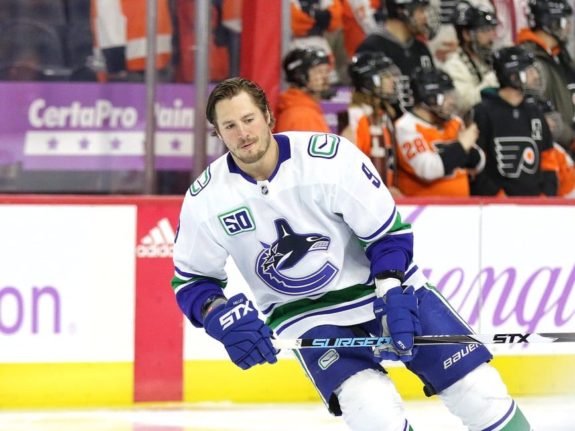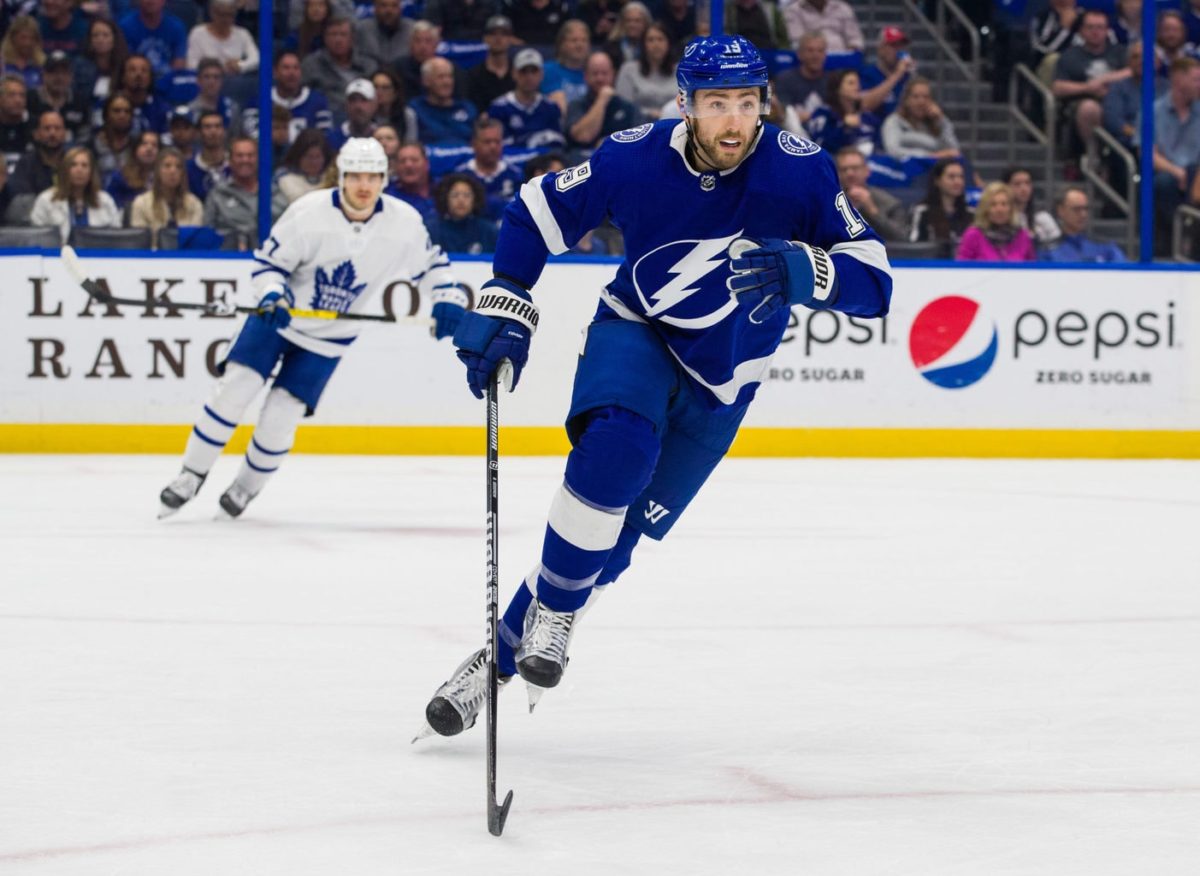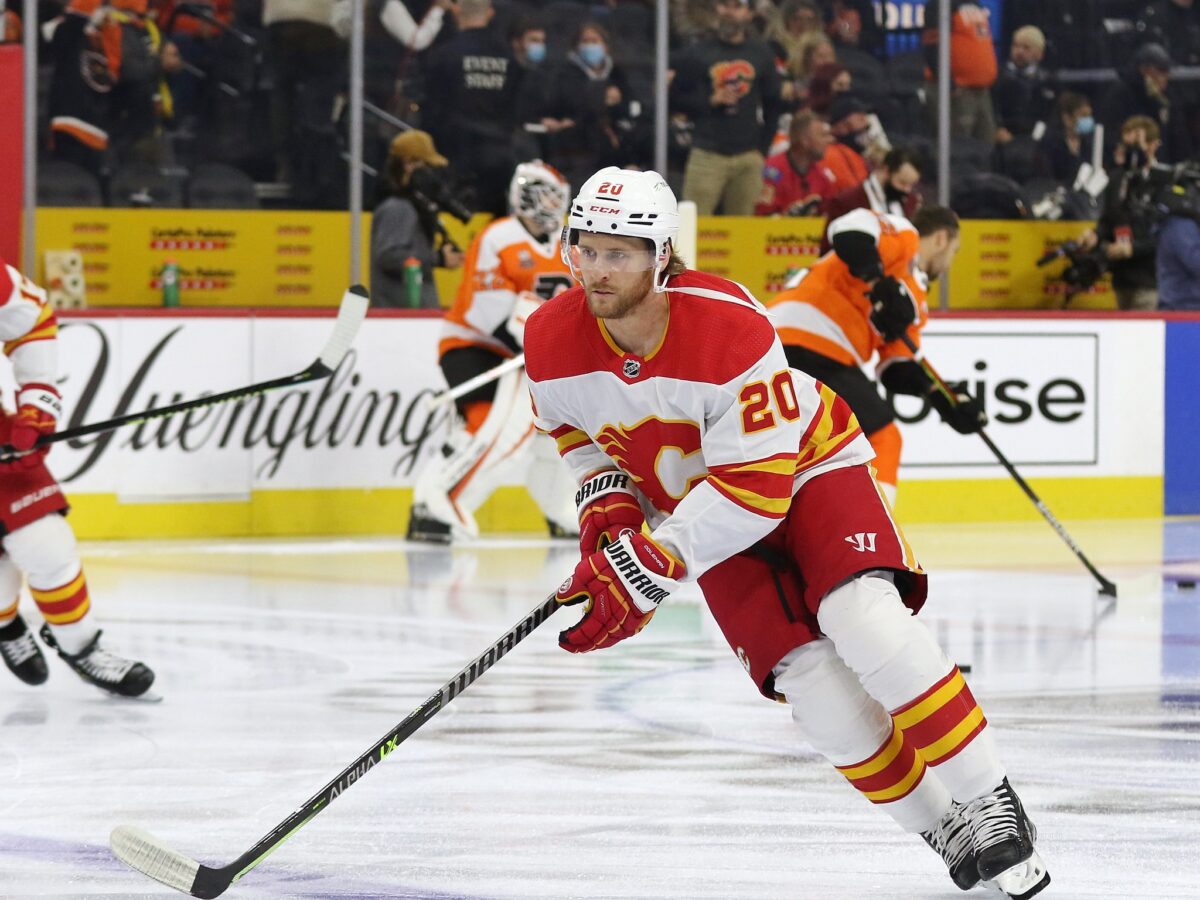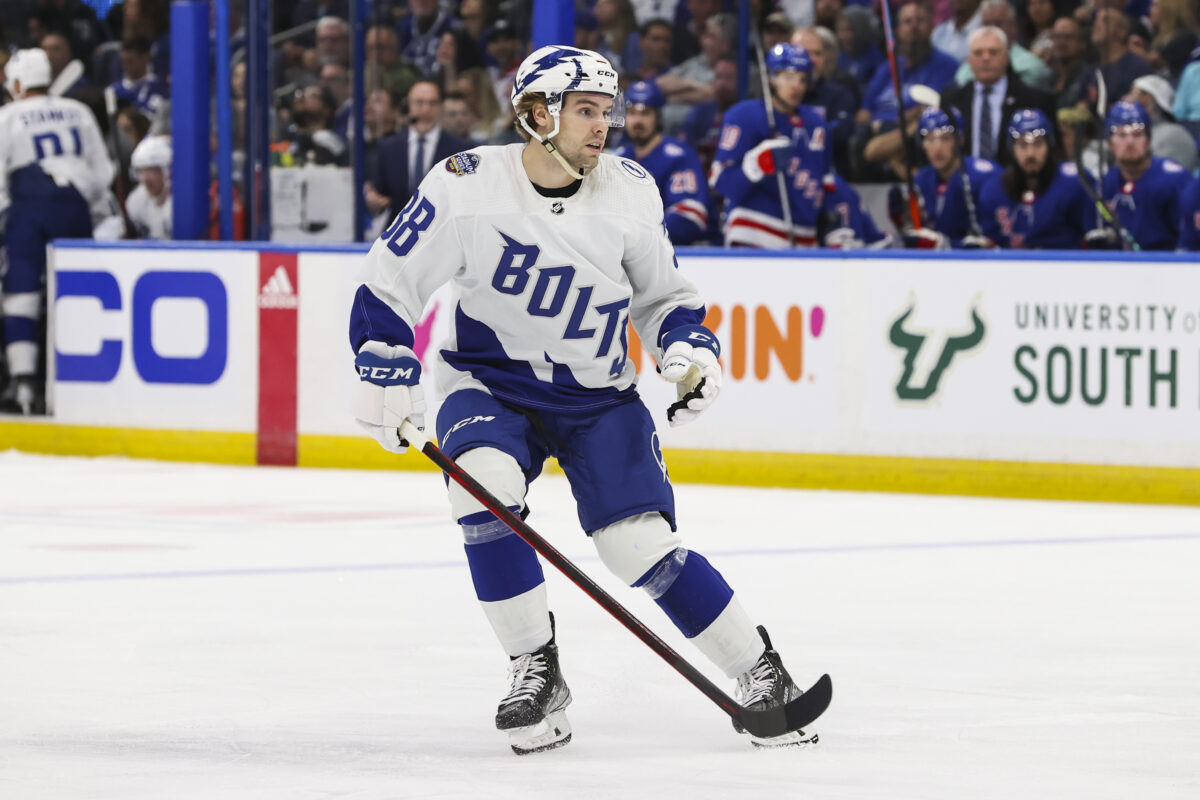Julien BriseBois became the acting general manager of the Tampa Bay Lightning prior to the 2018-19 season. His predecessor, the legendary Steve Yzerman, had brought the team from the bottom of the league to a consistent playoff team in his eight seasons as general manager (GM). This fact caused many to worry about the future of the franchise with him no longer the GM. The core that he’d built had yet to win a Stanley Cup, and many feared the team would not be able to win one with BriseBois now in control.
Four years and two Stanley Cups later, it’s easy to say that he’s proved those naysayers wrong. While Yzerman built the foundation of the roster, it was BriseBois who assembled the framework necessary to winning back-to-back Stanley Cups. He’s been able to quickly identify and address issues throughout the roster while keeping the team salary cap compliant. The trade block has been one of his most successful ways in solving these issues.
While not every trade can be a winner, he’s been able to come out a winner in most of his biggest trades. Let’s take a look at and grade the biggest trades he’s made as general manager.
Lightning Move J.T. Miller to Canucks
J.T. Miller is the most prolific offensive talent that he has traded as GM. After an upsetting First Round loss in the 2018-19 playoffs, management knew changes needed to be made. To make any progress come playoff time this roster could not stay the same. On top of that, the team had a plethora of talent that they couldn’t continue to afford all of.
While Miller had been a big contributor to the success the team had in 2018-19, the contract that he signed the previous summer made him a movable asset to help the team reach its long-term goals. With four more years left at a very team-friendly $5 million per year, the Lightning did not have to look far and wide to find suitors for him.
As a result, he was moved to the Vancouver Canucks for a first-round pick in the 2020 NHL Draft, a third-round pick in the 2019 Draft, and goaltender Marek Mazanec. At the time, this seemed like a fair return for the 26-year-old. However, as time has passed, the return for him hasn’t exactly played out in the team’s favor.
Miller has turned into one of the best offensive players in the NHL, going for over a point-per-game pace in two out of the last three seasons. In return, Mazanec has yet to even sign a contract with the Lightning. That third-round pick in 2019 was used to draft goaltender Hugo Alnefelt, a prospect whom they’re hoping can backup starter Andrei Vasilevskiy a few years down the road. The only highly notable return that came out of the trade was the first-round pick in the 2020 Draft. That pick was used a year later to acquire Blake Coleman at the 2020 trade deadline (more on that trade to come).
While the return may not have lived up to par, trading Miller provided the Lightning with more than the three assets acquired in the deal. The trade opened up a fair amount of cap space, helpful in allowing the team to re-sign restricted free agent (RFA) superstars Brayden Point and Nikita Kucherov that same offseason.

The benefit received from this financial flexibility far outweighs the lackluster return for Miller. While this gives BriseBois a passing grade for this trade, it’s one far from an ‘A+’ given Miller was just one point shy of 100 this past year.
Grade: B-
Barclay Goodrow Acquired from the San Jose Sharks in 2020
Goodrow was acquired from the San Jose Sharks to help add toughness and grit to the team’s bottom-six midway through the 2019-20 season. He fit perfectly in his role with the team, playing an integral role on the heralded third line with Coleman and Yanni Gourde. While not exactly relied upon to put up big offensive numbers, that third line was the ‘Energizer Bunny’ for the team throughout their two Stanley Cup runs.

In the trade, prospect Anthony Greco and a first-round pick in the 2020 Draft were given up for Goodrow and a third-round pick in 2020. At the time, many worried that a first-round pick was a bit of an overpayment for a young role player that had yet to have 30 points in a season. Nevertheless, the deal worked out in their favor. Greco, who at 28 years old is leaving North America to play professionally in Sweden in 2022-23, played just two games at the NHL level. The first-round pick the Sharks received ended up being a late one, at 31st-overall. With it, they selected Ozzy Wiesblatt, a promising forward prospect from the Prince Albert Raiders out of the Western Hockey League (WHL). After suffering a season-ending shoulder injury in 2022, he’ll likely play for the Sharks AHL-affiliate San Jose Barracuda in 2022-23.
While many project Wiesblatt as middle-six talent in the years to come, his timetable would’ve been of no benefit to the team in winning back-to-back Cups. For that reason, this deal can be seen as a large success. The ability to acquire an integral role player for two assets that combined for one NHL game throughout his tenure with the Lightning gives BriseBois a very high grade for this one.
Grade: A-
Trading for Blake Coleman in 2020
The second piece added to the third line at the 2020 deadline was Coleman. Acquired from the New Jersey Devils, the Lightning gave up a first-round pick in 2020 (the one acquired in the Miller trade) and prospect Nolan Foote in the deal. Similar to the Goodrow deal, little current NHL talent was given up to acquire another integral role player. Foote has spent the majority of the past two seasons in the AHL, playing just 13 games with the Devils during that time. A first-round pick in 2019, he’s coming off a solid 2021-22 campaign, going for 32 points in 55 games with the Utica Comets (the Devils’ AHL affiliate). As promising as last year was, it’s still a huge stretch to put him as a shoo-in as a future top-six NHL forward. Instead, the Devils are hoping that he continues to develop into a middle-six forward role in the next couple of years.
Related: Revisiting the Lightning’s Blockbuster Trade for Blake Coleman
The Devils drafted Shakir Mukhamadullin with the first-round pick acquired in the trade. He’s spent the last two years playing in his home country of Russia. Another promising prospect whose development wouldn’t have fit the Lightning’s window to win.

Coleman had his best offensive season with the Lightning in 2020-21, going for 31 points in just 55 games. He also had 24 points in 48 playoff games throughout their two Cup runs. His production was significant enough for him to get a massive raise in free agency following the 2020-21 season, inking a six-year deal at $4.9 million per year with the Calgary Flames. The production along with the minimal cap hit that came along with him ($1.8 million per year), make for another largely successful deal for the front office.
Grade: A-
BriseBois Cap ‘Genius’ in Trading Johnsons to Chicago
Perhaps one of the best examples of the current GM’s ‘genius’ in terms of managing the cap is the Tyler Johnson trade to the Chicago Blackhawks in 2021. After being one of the team’s top players earlier in his career, Johnson’s role had drastically decreased the two seasons before being dealt. Once a mainstay on the team’s top-six, he’d been used primarily in a bottom-six role on the two Stanley Cup-winning teams. While great in that role, his cumbersome $5 million cap hit did not match his bottom-six level production on the ice. With three more years left on his contract, paying him was a massive burden to an already cap-strained team. For this reason, he was dealt along with a second-round pick in 2023 for defenseman Brent Seabrook.
Seabrook would unofficially retire upon the finalization of the deal, allowing the team to put him on the long-term injured reserve list (LTIR). There he would not be counted towards the team’s salary cap, instead providing them with additional cap relief. This ‘LTIR strategy’ had been used by the team before, as just the season prior Kucherov sat out the entire regular season with a hip injury, returning to the lineup for the first game of the playoffs, where there is no salary cap. In his absence, he provided the team with some much-needed financial flexibility. Upon his return, the team was a staggering $18 million over the regular season cap, much to the dismay of their opponents.
This is arguably the best trade on this list. The combination of ridding a bad contract from the books while gaining cap relief simultaneously leaves little room to poke for any flaws. Thus giving him his first ‘A’ on this report card.
Grade: A
Lightning add Hagel in Trade with Blackhawks
With the losses of Goodrow and Coleman to free agency the summer prior the team lacked offensive depth in the early stages of the 2021-22 season. If they wanted to make another Cup run, their GM needed to address their glaring weakness.
Enter Brandon Hagel.
Right before the trade deadline, Hagel was brought over from Chicago along with two future fourth-round picks for Taylor Raddysh, Boris Katchouk, and a first-rounder in both the 2023 and 2024 Drafts.
This was another deal met with skepticism. Two first-rounders for a player who had never sniffed a point-per-game offensive pace? However, upon a deeper look, Hagel was playing well above his meager $1.5 million salary, with two and a half years left on the deal. Along with having 21 goals in just 55 games in 2021-22, the team had reason to be optimistic he could bring over some depth scoring at a cheap price. This wasn’t exactly the case. He struggled to put up significant offense after the trade, albeit playing a much lesser role than with his former team.

Despite the lackluster offensive statistics the trade has yet to play out in its entirety. As an invaluable role player throughout the 2021-22 Playoffs, he carved out some use with the club. He’ll also be relied upon to step into a top-six forward role this upcoming season with the loss of Ondrej Palat. Meaning he’s been given an opportunity to make this trade look like a win for his new team. Based on what played out in 2022, the grade for this deal is promising, with the ability to go up or down based on what happens this upcoming year.
Grade: B-
BriseBois Trades for Nick Paul
The other major mid-season move last year was adding Paul. Giving away fellow bottom-sixer Mathieu Joseph and a fourth-round pick to the Ottawa Senators, this trade was a classic ‘change of scenery’ situation for both players involved. Neither club was necessarily satisfied with the production out of either player and was looking for replacement options for their current roles.
The trade ended up, for now, being a rare instance where both sides came away happy. Joseph had 12 points in 11 games with the Senators to close out the season. While on the other side, Paul played a big role in the Lighting’s playoff run this past year. He played up and down the lineup, providing a hard two-way game, a true swiss-army knife for his new club.
The immense value Paul provided in his short tenure with the team earned him a huge payday this summer. Inking a seven-year contract at $3.15 million per year, the team saw enough from him to put him into their long-term plans. As for a grade, this trade was yet an example of the front office recognizing a weakness and addressing it mid-season. For that reason alone, this is another deal earning a relatively high mark on the ‘BriseBois report card.’
Grade: B+
McDonagh Moved to Clear Cap Space
The most recent big name moved by the front office was Ryan McDonagh. One of the league’s top defensemen, he was moved to the Nashville Predators this summer to clear cap space. In return, the team received prospect Grant Mismash and defenseman Philippe Myers.
The Lighting viewed McDonagh as a depreciating asset. At 33, and with four more years left on his deal that comes with a $6.75 million cap hit, he became a risky investment for the long-term goals of the team. In his place, the front office elected to invest long-term in some of the younger talent already on the active roster (i.e. Cernak, Sergachev, Cirelli extensions).
While moving his cap hit is understandable, the load is light for what he brings to the ice. As a legit top-20 defenseman in the NHL, you would hope for a bit more of a return than a prospect and a bottom-pairing defenseman. This deal is a prime example of how leverage works in the trade market. The team’s cap situation gave the Predators leverage, allowing them to give up minimal assets for a bona fide star. While we’ll have to say how this one plays out, this one may go down as a rare loss for the front office.
Grade: C+
Overall, he passes ‘trading 101’ with flying colors. His understanding and knowledge of the salary cap and the value of current and future assets have allowed for success in most of the deals he’s made. So much so that he’s become a household name to the average hockey fan, in just a short amount of time at the helm.